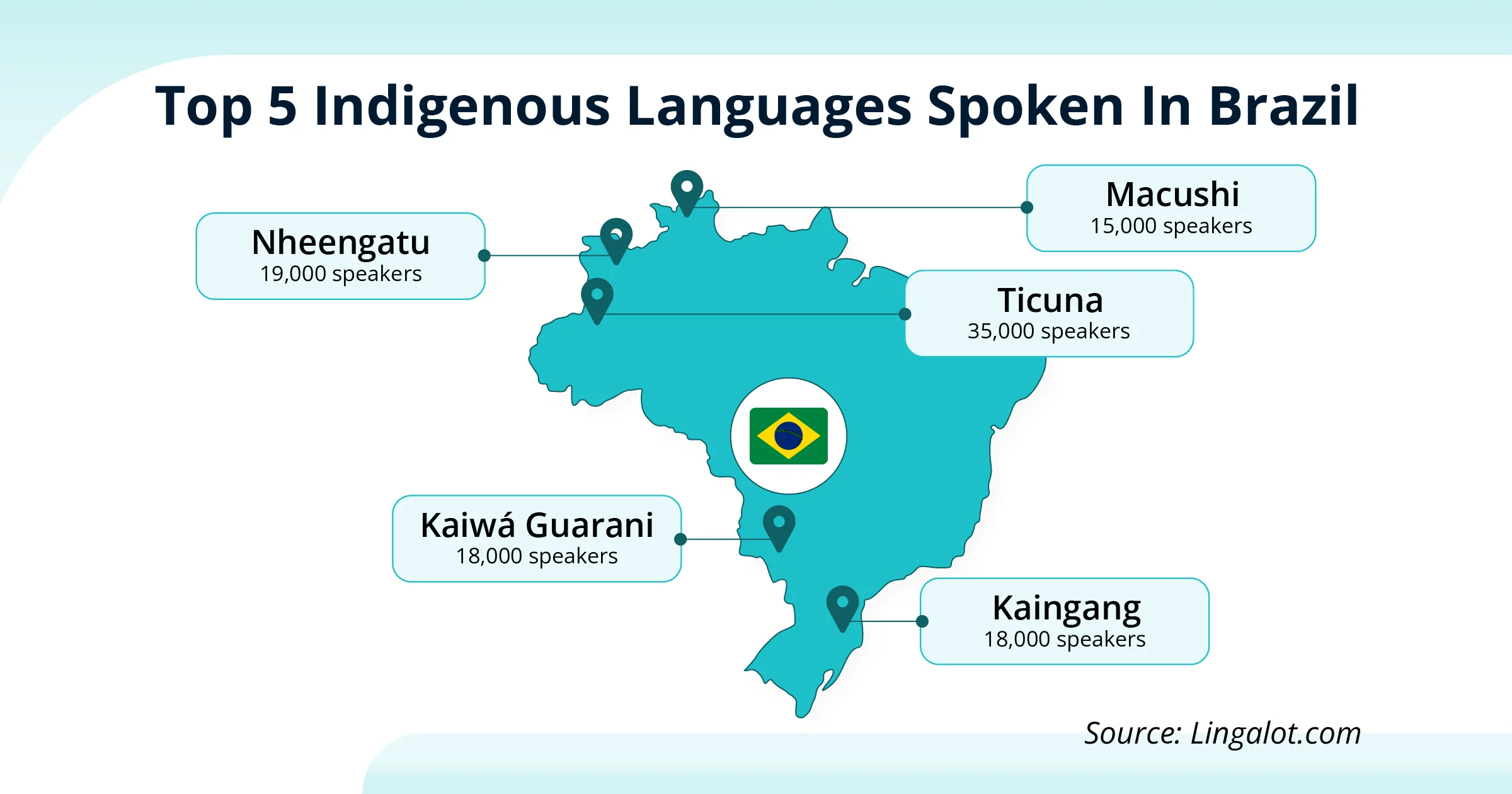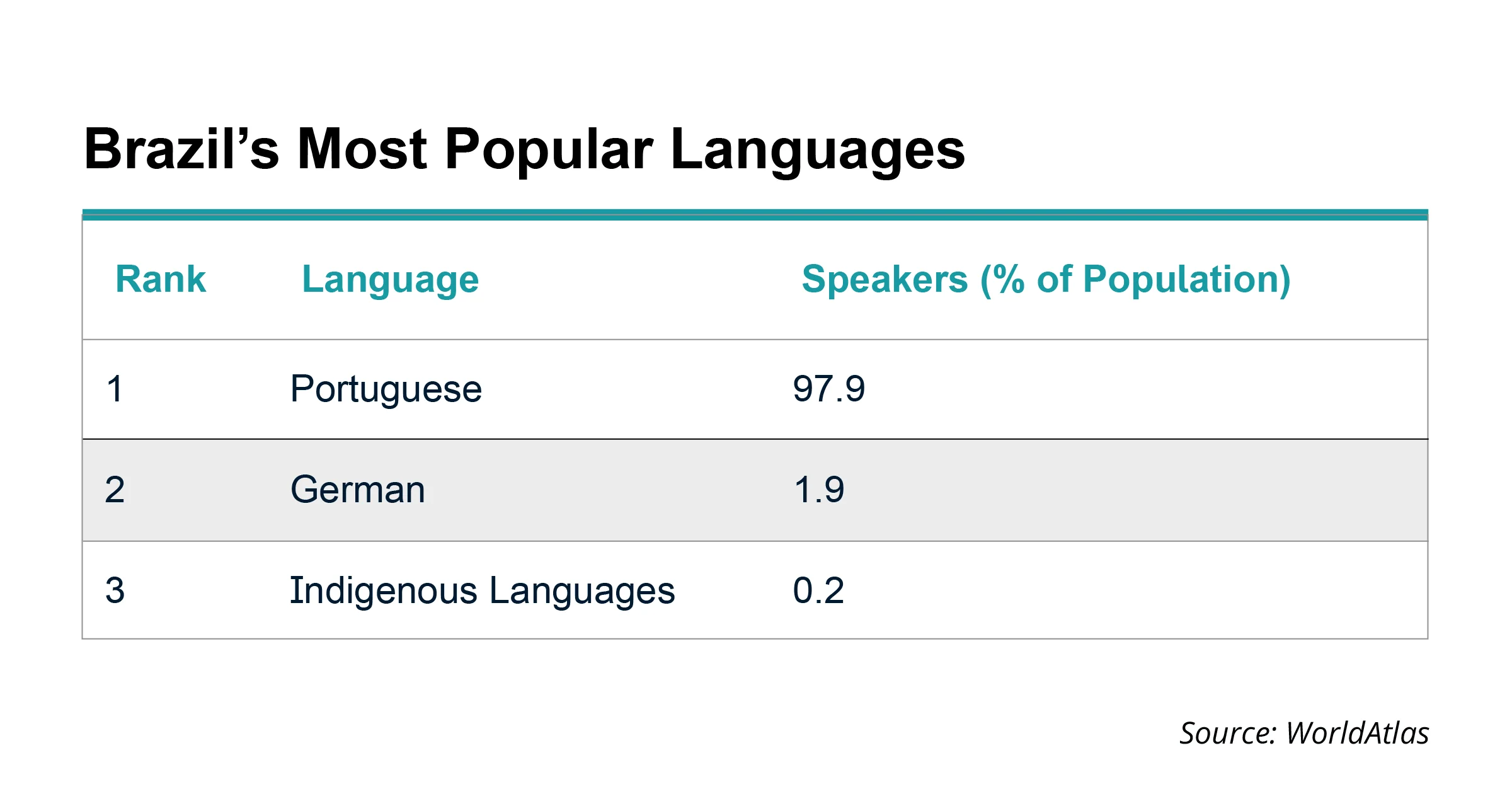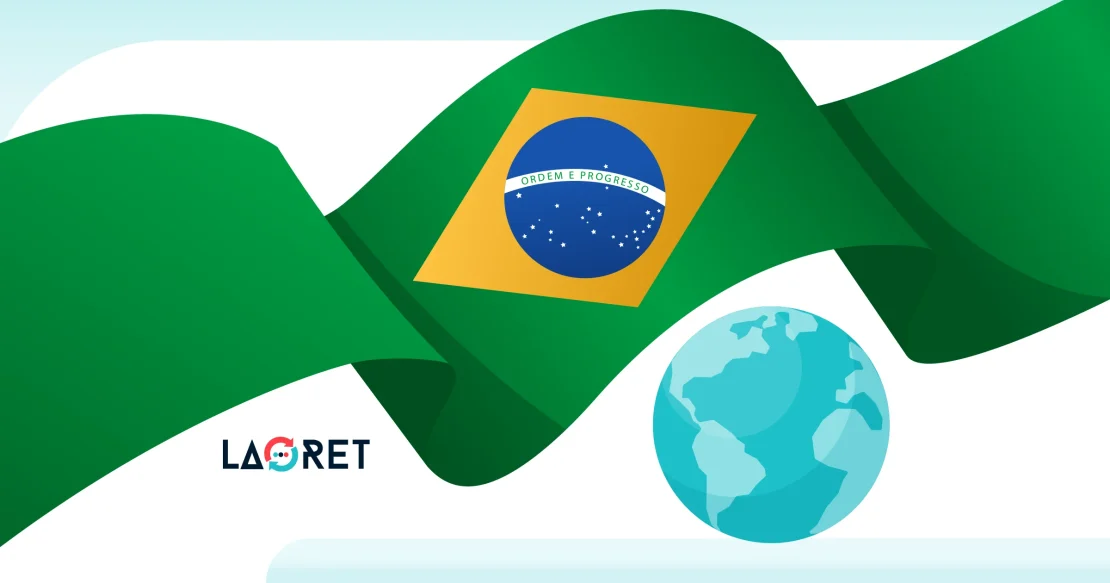Languages Spoken in Brazil: What You Need to Know for Global Expansion
As the largest country in South America, Brazil is home to a vibrant population of over 209 million people. At its heart lies São Paulo, a city that dominates both the continent and ranks among the world’s major cities.
In this dynamic nation, around 228 languages are spoken. This includes Portuguese, 11 foreign or immigrant languages, and an impressive array of 217 indigenous languages.
Discover the rich linguistic diversity of this nation as we explore the most common languages spoken in Brazil in our blog post today.
Let’s get started!
Portuguese: The Dominant Language of Brazil
As the only predominantly Portuguese-speaking country in South America, Brazil’s linguistic landscape is dominated by Brazilian Portuguese. This widely spoken language, a distinct variant of European Portuguese, is the primary language for 97.9% of the population, making Brazil a predominantly Portuguese-speaking country.
Brazilian Portuguese, while official across government, education, and business, differs notably from European Portuguese. These differences appear in pronunciation (like “ti” sounding like “chee”), vocabulary (“trem” vs. “comboio” for train), and grammar (using “você” instead of “tu” for “you”).
Have a look at Brazilian vs. European Portuguese key difference terms:

Speakers from Brazil and Portugal are generally mutually intelligible, although regional accents and expressions may require some adjustments. This understanding stems from their shared colonial history, where Portuguese became the dominant language, overshadowing indigenous languages and shaping Brazil’s linguistic landscape.
Indigenous Languages Spoken in Brazil
Beyond Portuguese, Brazil’s linguistic diversity includes approximately 217 indigenous languages, primarily in the northern regions. Every Indigenous language in Brazil represents vital links to ancestral heritage and cultural identity.
The most widely spoken Indigenous languages include:
- Ticuna in the Amazon region
- Kaingang and Kaiwá Guarani in southern and central-western areas, near Spanish speaking countries like Paraguay and Argentina

A fascinating example of linguistic resilience is Nheengatu, a Tupian language once used as a lingua franca in the Amazon. Today, it is experiencing a revival, particularly among younger generations. Preserving languages in Brazil like Nheengatu ensures cultural diversity and protects the traditional knowledge they carry.
While these indigenous languages are crucial for preserving cultural knowledge, Brazil’s linguistic landscape extends beyond them to include various immigrant languages.
Let’s explore these other linguistic influences.
Immigrant Languages Spoken in Brazil & Brazil’s Multiculturalism
Brazil’s language story goes far beyond Portuguese. While most of its neighbors are Spanish-speaking countries, Brazil stands out with its rich mix of immigrant languages. The waves of immigration over the years have left a lasting impact on the languages spoken in Brazil.
German language,
German stands as Brazil’s second most spoken language after Portuguese, with 1.9 of the population (around 3 million speakers) preserving their linguistic heritage through community celebrations, schools, and local German-language media.

Italian Presence:
Italian influence, particularly in southern Brazil, led to the development of Talian, a unique dialect blending Venetian Italian and Portuguese. This linguistic heritage continues in rural communities, celebrated through cultural events and local traditions.
In addition to these two languages, here is an overview of other immigrant languages present in Brazil:
Japanese
Japanese communities, particularly in São Paulo, have a significant presence due to immigration waves. Japanese language and culture thrive in neighborhoods like Liberdade, where many cultural events and traditions continue to be celebrated.
Spanish
Due to Brazil’s proximity to Spanish-speaking countries, Spanish is commonly understood, especially in border areas. While not as widespread as other languages, it is increasingly being learned as a second language.
English
English has gained prominence in Brazil, particularly in the business, education, and tourism sectors. Many Brazilians study and speak English to enhance career opportunities and engage with global media and culture.
Navigating a market with such linguistic diversity can be challenging for businesses. So, how can you effectively enter and thrive in Brazil?
Localizing for the Brazilian Market
Comprehensive language solutions are needed for effective localization across regions and communities, but focusing solely on Portuguese translation services may not be sufficient.
Companies must adapt their messaging, visuals, and even product features to align with Brazilian cultural values and preferences. For instance, McDonald’s “Tastes of Brazil” menu incorporates local flavors, while Nestlé developed region-specific product variations that resonate with local tastes.
Successful localization has shown results, as seen with Netflix Brazil’s content and Coca-Cola’s “Share a Coke” campaign, which incorporated popular Brazilian names and expressions, leading to increased engagement and brand loyalty.
Looking for a localization and translation partner?
Laoret, Your Partner in Global Language Solutions
Navigating the complexities of global communication requires a trusted partner so, expand your global reach now with Laoret.
We provide comprehensive language services in 120+ languages, ensuring your message resonates with audiences worldwide and is tailored to meet your global expansion needs.
From translation and localization that capture cultural nuances to expert interpretation and DTP, we are committed to delivering excellence to empower your business for international success.
Let us help you break down language barriers and achieve your global goals. Contact us!






